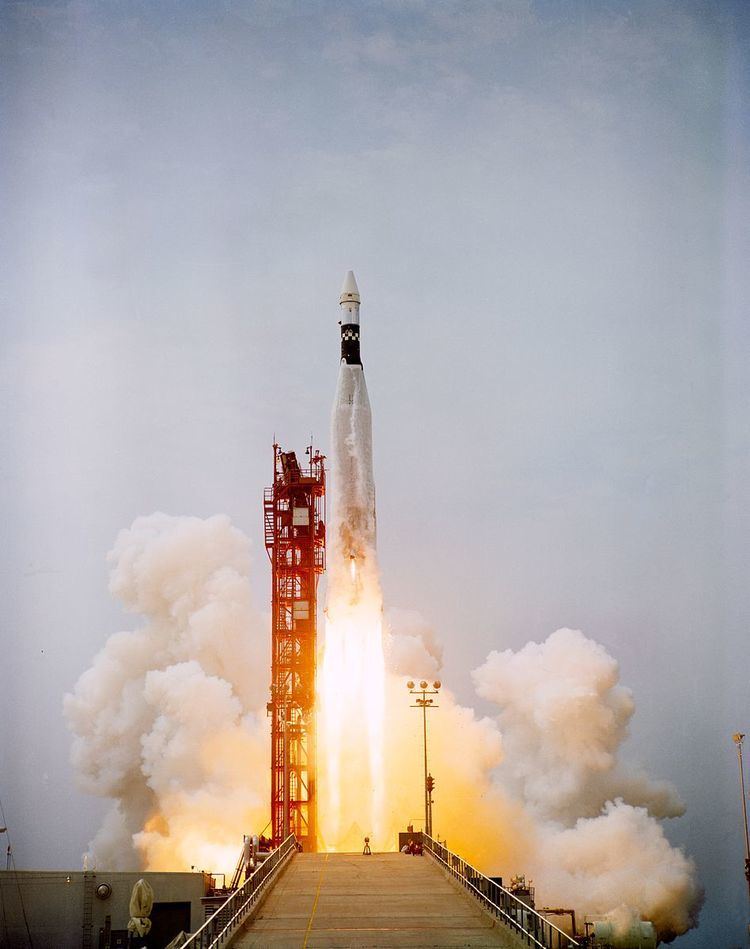Country of origin United States Total launches 5 | Status Retired | |
 | ||
Function Expendable launch systemSounding rocket Manufacturer ConvairGeneral Dynamics Launch sites SLC-3E, VandenbergLC-14, Cape Canaveral | ||
The Atlas SLV-3, or SLV-3 Atlas was an American expendable launch system derived from the SM-65 Atlas / SM-65D Atlas missile. It was a member of the Atlas family of rockets.
Contents
The Atlas SLV-3 was a stage and a half rocket, built as a standardized replacement for earlier Atlas launch systems, which had been derived from the various Atlas missiles.
Most space launcher variants of the Atlas up to 1965 were derived from the D-series Atlas ICBM with custom modifications for the needs of the particular mission. The SLV-3 would use a standardized configuration based on the Atlas D missile for all launches with the exception of different widths for the top of the rocket depending on the upper stage being flown.
The SLV-3 had thicker gauge tank walls to support the weight of upper stages as well as upgraded engines and removal of unneeded ICBM hardware such as retrorockets. Although the main engines had greater thrust, the verniers were detuned slightly in the interest of improved ISP (vacuum specific impulse).
Variants of the SLV-3 flew until 2004 when the legacy Atlas was retired from service and replaced by the Atlas V, a completely new vehicle with conventional aircraft-style construction and different engines.
Versions
The following versions of the launch system were produced.
Atlas-SLV3
Standard Atlas-Agena vehicle. It is most well known for launching the Augmented Target Docking Adapter (ATDA). The launch was conducted on 1 June 1966, and was the first flight of the Atlas SLV-3 as an independent vehicle. The rocket was also used for three suborbital tests of X-23 Prime re-entry vehicles.
Most Atlas-Agena SLV-3s were used for classified DoD payloads, especially KH-7 GAMBITs.
A Burner II upper stage could be used to increase payload.
Atlas-SLV3A
Atlas-Agena SLV-3 with extended propellant tanks for longer burn time. It was used to launch OGO-3 in 1968, all remaining launches being classified Canyon/Rhyolite SIGNIT satellites. All launches took place from LC-13 at CCAS.
Atlas-SLV3B
One-off Atlas used to launch the first OAO satellite. It consisted of the SLV-3C Atlas with the Agena and payload enclosed in a full-width fairing.
Atlas-SLV3C
Standard Atlas-Centaur booster, without the tapered forward section to accommodate the smaller Agena stage.
Atlas-SLV3D
Same Atlas core as SLV-3C, but with an enhanced Centaur stage.
